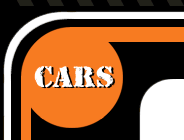
remote control cars racing
Navigation Big Remote Control Cars
Low Charge Time Electric Remote Control Cars Remote Control Cars Racing Cars Electric Fast Remote Control Rc Racing Cars Gas Rc Cars remote control rc cars
Remote Control Rc CarsNavigation Big Remote Control Cars Article/Link
Remote Control Car Motors
By Michael Paetzold, Fri Dec 9th All types of racing cars have different types of motors. Somehave single or some have double. It is really confusing to tryto sort out the difference between a single our double motorcar. Plus a Read more...
Article/Link
Remote Control Cars - Handy Do-it-yourself Tips For Rc Cars
By Clive Chansa, Fri Dec 9th If you're not from an engineering background but pursue drivingremote control cars as a hobby, it's always a good idea to learnas much as possible about remote control cars. We all want somekind Read more... Sponsored Links
|
Rc Car Racing - The Basics For a beginner, the sheer amount of brands, varieties and specs of RC vehicles can be overwhelming. There are literally hundreds of types of RC cars and trucks, all with different engines, performance levels and completely customizable details. This puts hobby quality RC cars on a whole different level than toys and replicas, and is what makes them so much more interesting and exciting to play with. While the actual mechanics of how each RC vehicle works can vary greatly from one to the next, the basic principles remain the same. Once you understand how RC cars work, you’ll have a better idea of just what’s involved, and which one would be right for you. There are four main parts to an RC vehicle: • Transmitter: This is the control you hold in your hand, usually powered by a 9-volt battery. Using radio frequencies, the transmitter relays the steering and control commands you give it to the receiver. • Receiver: There are two parts to the receiver- an antenna and a circuit board inside the car. The radio frequencies sent by the transmitter are picked up by the receiver and relayed to the various appropriate parts of the vehicle. • Motor(s): RC cars and trucks feature a variety of different types of engines, all with varying degrees of difficulty and output. The motor is often said to be the heart of the RC car and is the most intricate part of building your own RC. • Power Source: Of course power is needed for acceleration, steering and overall engine output. Aside from the 9-volt battery in the transmitter, the power source depends on the type of car: electric cars run on rechargeable, replaceable battery pack while nitro cars use a fuel mixture similar to what runs a real car. What does RC Stand For? If you’re new to RC it can often be confusing just what is meant- radio or remote control cars. Though the two are often used interchangeably, this is incorrect; they are not the same thing at all, since the way they transmit signals is completely different. You can spot a remote control car by the wire connecting the controller to the car itself. Radio control vehicles, on the other hand, use radio frequencies to send messages from the steering controls on the transmitter to the receiver in the car. There are FCC regulations for all consumer electronics that use radio frequencies, in order to properly allocate the frequencies on the band without too much interference. Usually RC vehicles operate at 27MHz or 49MHz frequencies- the same as your walkie talkie or garage door opener. More advanced RC models like planes require a higher frequency, and are regulated to 72MHz or 75MHz. Always consult your manual to make sure you’re using the correct frequency, and for instructions on how to change frequency. As long as you’re running your RC by yourself, all you need to do is follow the manufacturer’s instructions on how to choose the correct frequency for your vehicle. But when it comes to race time or even just practicing with friends, you’ll need to make sure every one has their own frequency or the signals will get crossed. If you’re at an official race, the organizers take care of this by providing each racer with a specific frequency and a flag with which to mark your car. In order to avoid crossed signals, you’ll need to make sure when practicing that you follow a similar process. Cal Golden is an avid RC car enthusiast and webmaster of the RC Car Station. Race on over and find out why rc cars are taking the hobby world by storm.RC Car Station #ARTICLE_AUTHOR |